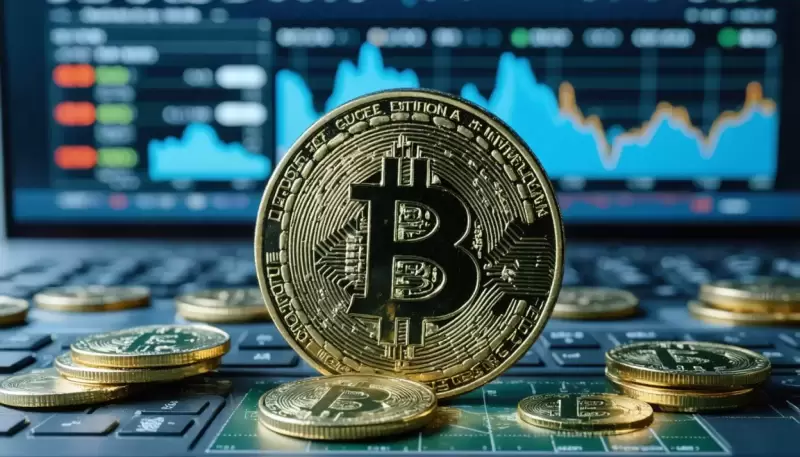 |
|
 |
|
 |
|
 |
|
 |
|
 |
|
 |
|
 |
|
 |
|
 |
|
 |
|
 |
|
 |
|
 |
|
 |
|
Cryptocurrency News Articles
Stablecoins in Asia: A Patchwork of Approaches
Apr 16, 2025 at 09:21 pm
If you've dipped your toes into the world of cryptocurrency, you know the drill: prices can swing wildly

If you've dipped your toes into the world of cryptocurrency, you know the drill: prices can swing wildly, making headlines for sudden surges or stomach-churning drops (although recent events in the stock markets surrounding Trump’s tariff policy show this isn’t exclusively limited to crypto).
But amidst this volatility, a different kind of digital asset has quietly become essential plumbing for the crypto ecosystem: the stablecoin. Pegged to familiar currencies like the US dollar, these tokens aim to be the calm in the crypto storm, offering a reliable digital stand-in for everyday money. Their usefulness for trading, payments, and even just holding value digitally has made them incredibly popular, especially across Asia – a region buzzing with crypto activity and accounting for a massive slice of global trades (Cryptocurrency in Asia: The Adequate Laws and Regulations).
But this success hasn't gone unnoticed by regulators. As billions flow through stablecoins daily, governments from Tokyo to Singapore to New Delhi are grappling with a critical question: how do you regulate these digital dollars and local currency equivalents to ensure they are genuinely stable and safe, without stifling the innovation they represent?
As of early 2025, the answer across Asia isn’t a single chorus, but a complex harmony of different tunes. Some nations are laying down clear, welcoming frameworks, hoping to attract the burgeoning digital finance industry. Others are moving more cautiously, wary of potential risks to their financial systems. This article explores this unfolding regulatory patchwork, looking at how key Asian countries are shaping the rules for stablecoins and what it means for users and the future of digital money in the region.
Why Stablecoins Need Rules: Keeping Things Safe and Sound
Why are governments suddenly so interested in rules for stablecoins? There are a few key reasons:
The Asian Landscape: A Patchwork of Approaches
Unlike regions like Europe, which is moving towards a single set of rules (known as MiCA), Asia doesn’t have one unified approach. Instead, each country is developing regulations based on its own economic goals, technological readiness, and concerns about financial risk. Let’s look at some key players:
Singapore: The Structured Innovator
Singapore has actively worked to become a leading hub for financial technology, including crypto. The Monetary Authority of Singapore (MAS), the country’s main financial regulator, has been proactive in setting clear guidelines.
Stablecoins fall under Singapore’s Payment Services Act, which was recently updated with changes taking effect right around now, in early April 2025. These rules treat stablecoin issuers and service providers (like digital wallets holding stablecoins) as “digital payment token” (DPT) providers.
Key aspects of Singapore’s approach include:
Singapore’s goal is clear: encourage innovation in the digital asset space while ensuring stability and robust consumer protection.
Japan: Pioneering Specific Stablecoin Laws
Japan was one of the first countries globally to recognize Bitcoin as a legal payment method back in 2017 and has continued to refine its crypto regulations. Notably, Japan took an early lead in specifically regulating stablecoins.
In June 2022, Japan passed a law dedicated to stablecoins, which came into effect in June 2023. This law clearly defines stablecoins and sets strict rules for who can issue them:
Furthermore, Japan’s Financial Services Agency (FSA) is looking to further integrate crypto, including potentially stablecoins used for investment, into its mainstream financial regulations. There are plans, possibly taking effect by 2026, to treat crypto assets more like traditional financial products under the Financial Instruments and Exchange Act (Japan to give crypto assets legal status as financial products, Nikkei says). This includes potential rules against insider trading and discussions around a simpler flat tax rate for crypto earnings, moving away from potentially very high progressive rates.
Japan’s approach focuses heavily on user protection and financial stability by tightly controlling who can issue stablecoins and ensuring they are reliably backed and redeemable.
Hong Kong: Building a New Stablecoin Hub
Hong Kong, another major Asian financial center, is also actively developing its stablecoin regulations. Following public consultations, the Hong Kong Monetary Authority (HKMA) is planning to introduce a licensing regime specifically for issuers of “fiat-referenced stablecoins” (FRS) – stablecoins pegged to traditional currencies like the US dollar or HK dollar.
The proposed rules focus on ensuring:
Hong Kong aims to launch this regime sometime in 2024 or 2025, positioning itself as a welcoming place for well-regulated stablecoin activities, competing with Singapore for crypto business.
India: High Taxes and Lingering Uncertainty
India presents a more complex and uncertain picture. While not explicitly banning cryptocurrencies, the Indian government has taken a very cautious stance, primarily through taxation.
This lack of clear regulation, combined with high taxes, makes it challenging for stablecoin users and businesses in India. While stablecoins are used, the environment
Disclaimer:info@kdj.com
The information provided is not trading advice. kdj.com does not assume any responsibility for any investments made based on the information provided in this article. Cryptocurrencies are highly volatile and it is highly recommended that you invest with caution after thorough research!
If you believe that the content used on this website infringes your copyright, please contact us immediately (info@kdj.com) and we will delete it promptly.
-

- Polkadot (DOT) price gains traction as it forms a double falling wedge pattern. This formation...
- Apr 21, 2025 at 04:25 am
- Polkadot (DOT) price has gained traction following the development of a double falling wedge pattern on the technical chart. This formation signaled renewed momentum in its price movement.
-

-

-

-

-

-

-

-

- Bitcoin (BTC) Bull Market Remains Active Unless the Price Falls Below This Level, Says Tony Severino
- Apr 21, 2025 at 04:00 am
- Popular crypto analyst Tony Severino has shared a bold take on the current Bitcoin (BTC) market structure. The chartered market technician has stated that the Bitcoin bull market remains active unless the price falls below a specific level.


























































